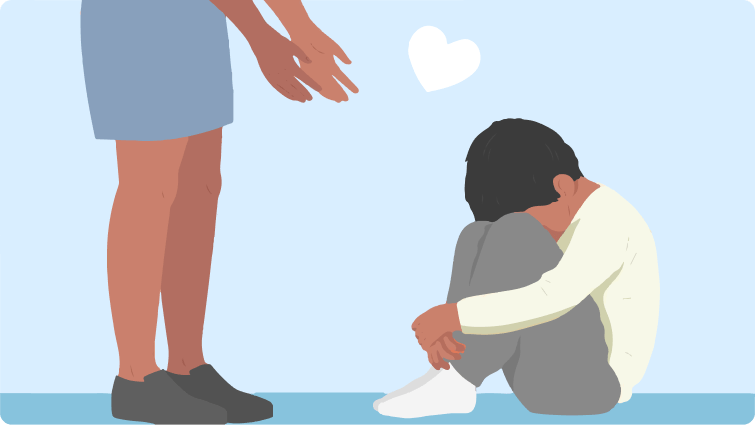In the United States, about 5 million pediatric patients have a severe mental condition (one that significantly interferes with daily life). 20% of American children will be diagnosed with a psychological disorder in any given year. Numerous “physical” elements, such as inheritance and brain chemistry, may contribute to developing a mental condition, rendering the phrase “mental sickness” insufficiently descriptive. Thus, many mental diseases can be adequately treated with medicine, psychotherapy (counseling), or both.

Mental Health in Children
Identifying mental illnesses in youngsters can be challenging for medical professionals. In contrast to adults, children undergo numerous physical, mental, and emotional changes as part of their average growth and development. They are also learning how to engage with people and the world and interact with others and adapt to the world.
In addition, each child matures at a different rate, and “normal” behavior and talents in youngsters span a broad spectrum. In addition to the child’s age and symptoms, any mental disorder diagnosis must consider the child’s home, family, school, and peer functioning.
Which Disorders Are Most Prevalent Among Children?
There are numerous sorts of mental problems that can affect children and adolescents, including the following:
- Children with Anxiety Disorders react to specific items or circumstances with fear and dread and physical indicators of anxiety (nervousness), such as a rapid heartbeat and profuse sweating.
- Attention-deficit/hyperactivity disorder (ADHD): Children with ADHD have trouble paying attention or concentrating, struggle to follow directions, and are frequently bored and annoyed by assignments. Moreover, they are typically restless and impulsive (do not think before they act).
- Children with Disruptive Behavior problems tend to disobey rules and are frequently disruptive in regulated environments, such as school.
- Pervasive developmental disorders: Children with these problems struggle to perceive the world in a healthy way and suffer from cognitive disorientation.
- Eating disorders are characterized by intense emotions and attitudes and typical weight or food-related behaviors.
- Elimination disorders: Disorders that influence bathroom-related behavior. Enuresis, sometimes known as bed-wetting, is the most prevalent elimination problem.
- Children with learning and communication disabilities have difficulty storing and processing knowledge and articulating their thoughts.
- Affective (mood) disorders include depression and bipolar disorder, characterized by persistent feelings of melancholy or quickly fluctuating moods. A relatively recent diagnosis is disruptive mood dysregulation disorder, a condition affecting children and adolescents characterized by chronic or persistent irritation and frequent outbursts of anger.
- Schizophrenia: Perceptual and thought disturbances characterize this disease.
- Tic disorders: cause a person to exhibit tics, which are repeated, abrupt, involuntary, and frequently meaningless motions and sounds.

How Is Childhood Mental Illness Diagnosed?
As with adults, mental diseases in children are diagnosed based on signs and symptoms; nevertheless, it can be highly challenging to detect mental illness in children. Many behaviors considered indications of mental problems, including shyness, anxiety (nervousness), unusual eating habits, and outbursts of anger, can occur as part of a child’s normal development. There are symptoms when behaviors frequently occur, endure a long time, occur at an uncommon age, or create a significant disturbance to the child’s and/or family’s life.
The United States Preventive Service Task Force now advises screening children and adolescents ages 8 to 18 for anxiety and teenagers ages 12 to 18 for major depressive disorder (MDD).
How Are Children With Mental Illness Treated?
Creative Therapies: such as art therapy or play therapy, may be beneficial, particularly for young children who may have difficulty conveying their thoughts and feelings.

What Are the Side Effects of Mental Illness Treatment?
Different pharmaceuticals have varying adverse effects, and some children cannot tolerate certain drugs. Although FDA-approved pharmaceuticals for treating mental problems in children are generally regarded as safe, the physician may need to alter prescriptions or dosages to reduce negative effects. It may take some trial and error to determine which meds work best for a specific child.
What Is The Prognosis for Children With Mental Disorders?
What Research Is Being Done on Mental Disorders in Children?
The majority of research on mental illness to date has focused on adults. However, the mental health community has recently begun to focus on childhood mental illness. Researchers examine childhood development in terms of what is normal and abnormal, attempting to comprehend how factors influencing development can affect mental health. The objective is to attempt to predict and ultimately avoid developmental issues that may lead to mental illness. The discovery of risk factors that enhance a child’s likelihood of having a mental disease is a crucial aspect of this research. In addition, the mental health community is requesting further research on the drugs used to treat children with mental problems.



